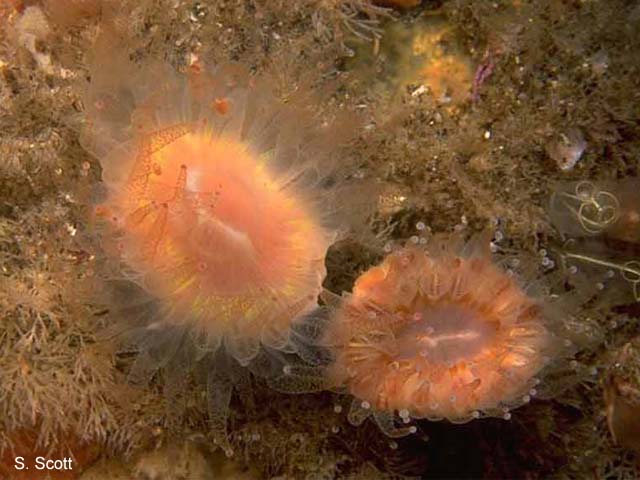| Caryophylliidae (cup corals) |
|
|
reef-associated; marine |
| Atlantic Ocean, the Mediterranean and Indo-West Pacific. |
|
The stony corals non colonial, whose skeleton limestone reaches 0.35 cm vertically, of oval section, at base little, even hardly narrowed. The tentacles comprise at their end a small spherical bludgeon. Polyps: brownish coupler, brownish or pink, the generally ringed oral disc of a brown ring, drawing towards the red (Ref. 358). |
| Epibenthic (Ref. 87524). Polyps establish in excavations and cracks, at lower levels of rock overhangs and on rock faces, at depths greater than 10 m; seldom in shallow waters (Ref. 358). Occurs along the infralittoral, circalittoral and bathyal zones (Ref. 85338). Found throughout the Mediterranean. Associated with the barnacle Pyrgoma anglicum, as symphoriontes (Ref. 358). |
|
Not Evaluated (N.E.) Ref. 123251)
|
|
|
Source and more info: www.sealifebase.org. For personal, classroom, and other internal use only. Not for publication.

